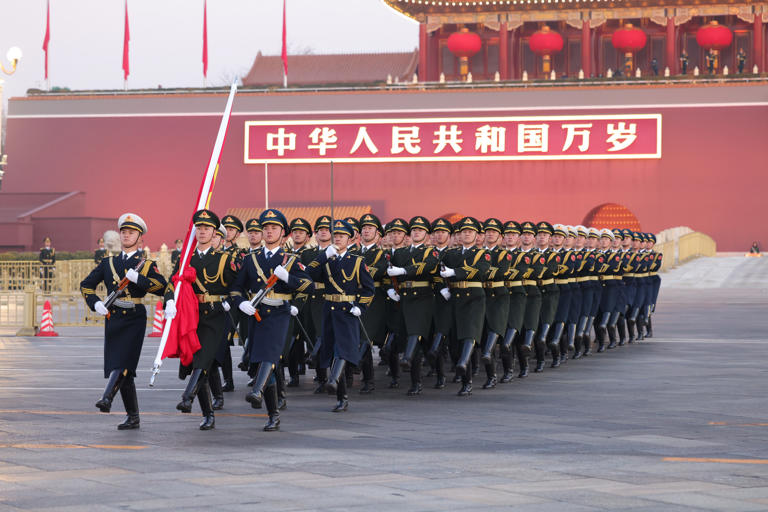
Key Points:
- U.S. Defense Secretary Lloyd Austin and Chinese Defense Minister Adm. Dong Jun spoke for the first time in 18 months, marking a thaw in military communications.
- The talks centered on managing tensions, emphasizing open channels of dialogue, particularly on flashpoints like Taiwan and the South China Sea.
- Both sides expressed concerns about global security issues, including Russia’s invasion of Ukraine and North Korea’s missile activity.
US, China Re-open Military Communication After Lengthy Pause
U.S. Defense Secretary Lloyd Austin and his Chinese counterpart, Adm. Dong Jun, held video talks on Tuesday, April 16, 2024. This marked the first dialogue between the two countries’ defense chiefs in nearly a year and a half. The talks come as both sides seek ways to prevent escalating competition that could risk conflict.
Focus on Communication and Managing Tensions
Maj. Gen. Pat Ryder, a Pentagon spokesperson, confirmed that the talks between U.S. Defense Secretary Lloyd Austin and Chinese Defense Minister Adm. Dong Jun focused on the bilateral defense relationship and broader security concerns. Key topics included Russia’s ongoing invasion of Ukraine and North Korea’s continued escalation of weapons testing. Secretary Austin underscored the importance of maintaining open communication channels between the two militaries, especially in light of the recent series of engagements to restore dialogue. These contacts were initiated following the November 2022 agreement between President Biden and President Xi.
However, China’s official response to the talks adopted a more guarded tone. Defense Minister Dong Jun emphasized the need to actively manage risk factors and avoid the potential for “major crises.” This wording reflects the persistent strategic mistrust that remains a core challenge in the relationship between the two global military powers.
South China Sea and Taiwan Loom Large
The issue of Taiwan, a self-governing democracy supported by the U.S., also featured prominently. Austin reaffirmed America’s commitment to Taiwan’s security, a position frequently criticized by Beijing. In response, Defense Minister Dong Jun reiterated the Chinese Communist Party’s stance that Taiwan is an inseparable part of China, a “core interest,” and that reunification with the mainland is an objective to be achieved, even through force, if deemed necessary. Beijing further urged the U.S. to respect its position in the South China Sea, underscoring the need for heightened diplomacy and trust-building measures to avoid escalation in this volatile environment.
Broader Global Concerns: Russia and North Korea
The discussions extended beyond regional tensions to address global security issues. Secretary Austin specifically voiced the United States’ concerns over allegations that China is providing material support to Russia in the form of arms sales. This support directly bolsters Russia’s ability to continue its military campaign in Ukraine. While Beijing has not officially endorsed Russia’s actions, tangible assistance to Moscow would represent a significant escalation with global implications.
Additionally, the two defense chiefs addressed the persistent security risks posed by North Korea’s ongoing development and testing of ballistic missiles. These activities destabilize the region and remain a concern for the U.S. and its regional allies.
The Path Forward
This initial dialogue between defense leaders represents a positive step in re-establishing communication channels between the two militaries. The U.S. and China acknowledge the inherent risks of uncontrolled strategic competition and rivalry. Pentagon officials have indicated an openness to continued engagements within the defense establishment at various levels. While reaching immediate, substantive agreements on contentious issues may prove challenging, maintaining open communication lines is vital for risk reduction. These channels can help prevent misunderstandings and miscalculations leading to unintended escalation in a complex security environment.
